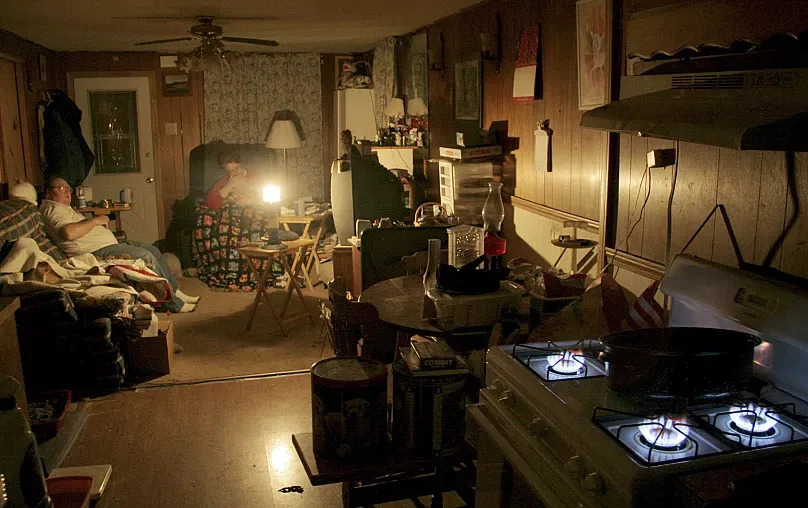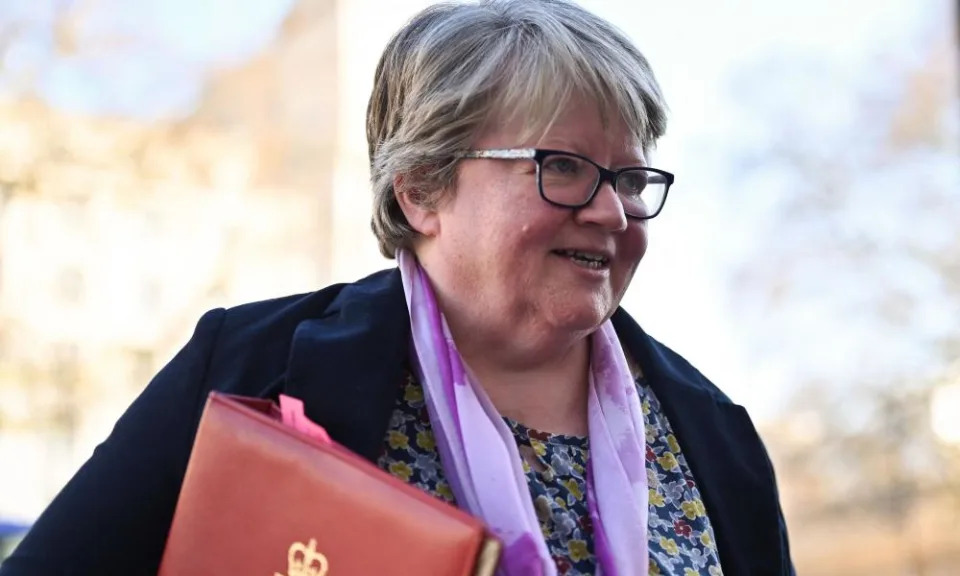How Matt Hancock plotted to have ‘useless loudmouth’ Covid scientist sacked
The Lockdown Files Team
Sat, 4 March 2023
THE PLAYERS
Matt Hancock
British Conservative politician
Jeremy Farrar
Epidemiologist and director of the Wellcome Trust
Dido Harding
British businesswoman

Ministers criticised by one of the world’s most eminent scientists tried to have him sacked from the Government’s Covid advisory committee, leaked messages reveal.
Sir Jeremy Farrar, a member of the Scientific Advisory Group for Emergencies (Sage), was described as “worse than useless” by Matt Hancock, who demanded of his permanent secretary: “Can we fire him?”
He also described Sir Jeremy, now the most eminent scientist with the World Health Organisation (WHO), as “totally offside” and a “complete loudmouth” who “has little respect amongst the serious scientists”.
Sir Jeremy, who was also the director of Wellcome Trust, Britain’s biggest medical research charity, at the time, had publicly questioned the Government’s decision to shut down Public Health England (PHE) in August 2020, about six months into the pandemic.
Sir Jeremy, who took up his new post as the WHO’s chief scientist only last week, had condemned the proposal to scrap PHE in favour of a new organisation run by Mr Hancock’s friend, Baroness Harding, who had run the NHS Test and Trace programme.
The former professor of tropical diseases at Oxford University and one of the world’s leading experts on infectious diseases had also been highly critical of Test and Trace.
He posted on Twitter early on Aug 19, 2020: “Arbitrary sackings. Passing of blame. Ill thought through, short term, reactive reforms… Preempting inevitable public inquiry” and a link to a newspaper article reporting the axing of PHE.
The social media post so infuriated ministers that they orchestrated a ring-round of Sir Jeremy’s colleagues including Baroness Manningham-Buller, the then chairman of the Wellcome Trust and the former head of MI5.
Lord Bethell, the health minister and one of Mr Hancock’s closest friends, told the then health secretary: “He’ll now know I’ve done a comprehensive ring round. This will irritate him but also warn him. I wonder if there is some sort of official route to talking to him?”
The conversations are revealed among more than 100,000 messages exchanged between ministers, officials and others during the pandemic that have been obtained by The Telegraph.
Sir Patrick Vallance, the Government’s Chief Scientific Adviser and the chairman of the Sage committee, also became embroiled in the row after Mr Hancock asked: “Does [Sir Jeremy] bring any value at all to SAGE? I've never once heard him say anything useful at all.”
Mr Hancock’s comments will raise serious concerns over the apparent attempts behind the scenes to undermine a senior scientist and member of Sage, the body that provided independent scientific advice on Covid to the Government.
It will also raise questions about ministers’ response to public criticism from eminent scientists who were concerned by the handling of the pandemic.
In his own book, published in July 2021, Sir Jeremy said of the then health secretary: “Matt Hancock shoulders a responsibility for the PPE shortages and testing fiasco, among other failings, that contributed to the dreadful epidemics in care homes and hospitals.”
‘Grave error’
In the book, Sir Jeremy also said Baroness Harding’s appointment as chairman of Test and Trace was a “grave error” and that the decision to put her in charge of the new body was “even worse” than PHE “being thrown under the bus”.
Mr Hancock appears to have been infuriated by Sir Jeremy from early on in the pandemic, even before his posts on the scrapping of PHE.
Four months earlier, in April 2020, Mr Hancock was already angry that Sir Jeremy had done an interview with Sophy Ridge on Sky News in which he had said: “I hope we would have a vaccine towards the end of this year,” but warned of the difficulty of making sure it was safe and then able to be manufactured in billions of doses around the world that “is truly effective”.
It is unclear what part of the Sky News interview so irritated Mr Hancock, but he sent a WhatsApp message to a special adviser at 9.18am on April 20, a day after the interview aired, questioning whether Sir Jeremy had been given permission to speak to the broadcaster. It is unclear whether there was any requirement of Sage members to do so.
Mr Hancock said: “We need a Jeremy Farrar handling strategy. He is totally offside, a complete loudmouth, has little respect amongst the serious scientists. Did he approach us before doing Ridge? He needs to be either inside the tent and onside, or outside and commentating. He adds no value internally.”
‘Frankly dangerous’
On the day that he gave the Sky News interview, Lord Bethell told Mr Hancock he had, “after massive toing-and-froing”, with Sir Jeremy and Prof John Newton, the Government’s testing tsar, agreed on proposals to conduct a survey to test the public on past and present Covid infections.
But Sir Jeremy had raised his concern that the antibody tests in April 2020 were unlikely to be accurate.
In a message circulated to Mr Hancock and Lord Bethell, Sir Jeremy wrote of the tests: “They should not be believed. I have seen no data that shows any currently available rapid test would be useful or informative. Some are frankly dangerous.
“I appreciate this is not a message that is popular. I wish this was not true. But the RDTs [rapid detection tests] are currently a distraction. In months to come there maybe good RDTs – there are none today in my view and reading of the data.”
Lord Bethell appeared to have been concerned at Sir Jeremy’s stance. “Farar is being a total spanner in the works,” he said in a message to Mr Hancock on April 19, adding: “But I think somehow he needs management. Either a Big Hug. Or a sharp talking to. But at the moment is q tricky.”
A month later, on May 29, Sir Jeremy posted on Twitter his concerns that Covid was “spreading too fast to lift lockdown in England” and that Test and Trace needed to “be in place, fully working” to deal with any surge in the virus.
He would tweet three weeks later, on June 19, 2020, that the “situation now changed” and the decision to lift lockdown restrictions was “entirely reasonable”.
But on May 29, Allan Nixon, another of Mr Hancock’s advisers, messaged his boss on WhatsApp: “Jeremy Farrar going off the rails again.” The then health secretary replied: “He is definitely no10’s problem not ours,” adding: “If asked about Farrar by No10, explain that we thought best to relieve him from his duties but were overruled...”
Mr Hancock’s anger and frustration increased, however, after Sir Jeremy posted criticism of the Government on Twitter following the axing of PHE.
That day, Aug 19, 2020, Mr Hancock sent a message to Sir Chris Wormald, the permanent secretary in the Department of Health and Social Care.
“We have to do something about Farrar. Can we fire him? This is completely unacceptable,” he wrote in a WhatsApp message. Prof Sir Chris Whitty, England’s Chief Medical Officer (CMO), replied: “Would have to be Patrick V to fire him as it’s SAGE."
The next day, Mr Hancock raised his concern with Emma Dean, a special adviser, asking her to speak to Sir Chris.
“Can you talk to CMO and see what we can do,” asked Mr Hancock. Ms Dean replied: “Yes. What is your ask? Get rid or neutralise?” to which Mr Hancock responded: “Neutralise. Stop the defamation.”
Later, Mr Hancock, clearly still irritated, said: “Why don’t we kick him off SAGE? he brings nothing.” Ms Dean said removing Sir Jeremy “would make him a martyr and would dine out on it very noisily” and advised against it.
On Aug 21, the issue over Sir Jeremy is still rankling and Lord Bethell told Mr Hancock that he had spoken to an eminent scientist “about handling Farrar”.
Lord Bethell reported back to Mr Hancock he had been advised “dont talk to Manning Buller - she’s ferocious and self-important, and would contrive to interpret a call as somehow interfering with Wellcome independence. He suggests I speak to Farrar directly, nicely explaining the challenge of outspoken external criticism when operating as a trusted advisor. I’ve put a call in, he didnt pick up. will update”.
“Manning Buller” refers to Baroness Manningham-Buller.
Five days later, Lord Bethell messaged Mr Hancock telling him he had spoken to eminent scientists about Sir Jeremy.
He also spoke to Baroness Manningham-Buller: “Manning Buller said she agreed with him 100% and defended his right to say whatever he liked.
“I’ve called and texted JF but he hasn’t replied. He’ll now know I’ve done a comprehensive ring round. This will irritate him but also warn him. I wonder if there is some sort of official route to talking to him?”
Sir Jeremy remained a member of Sage throughout the pandemic.























